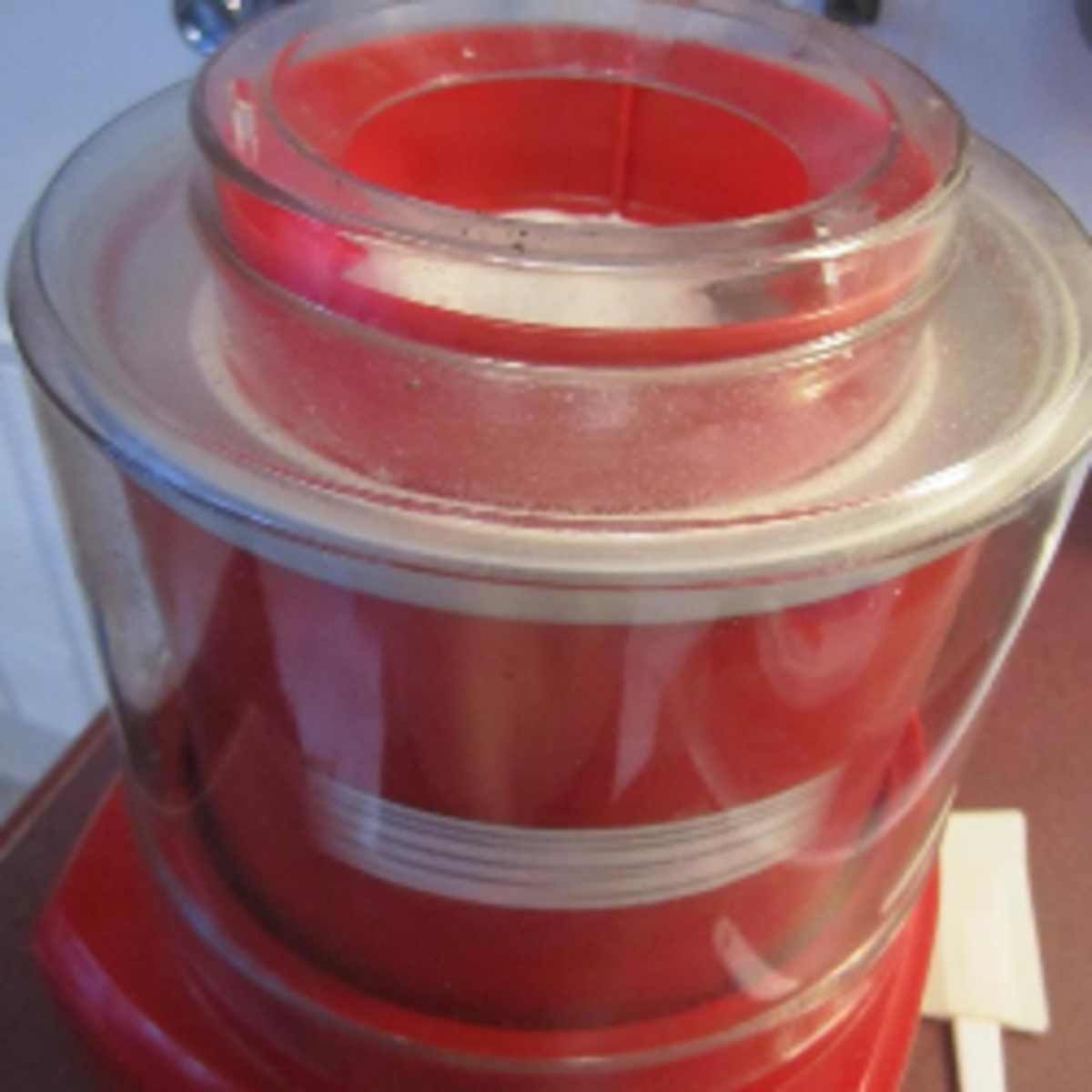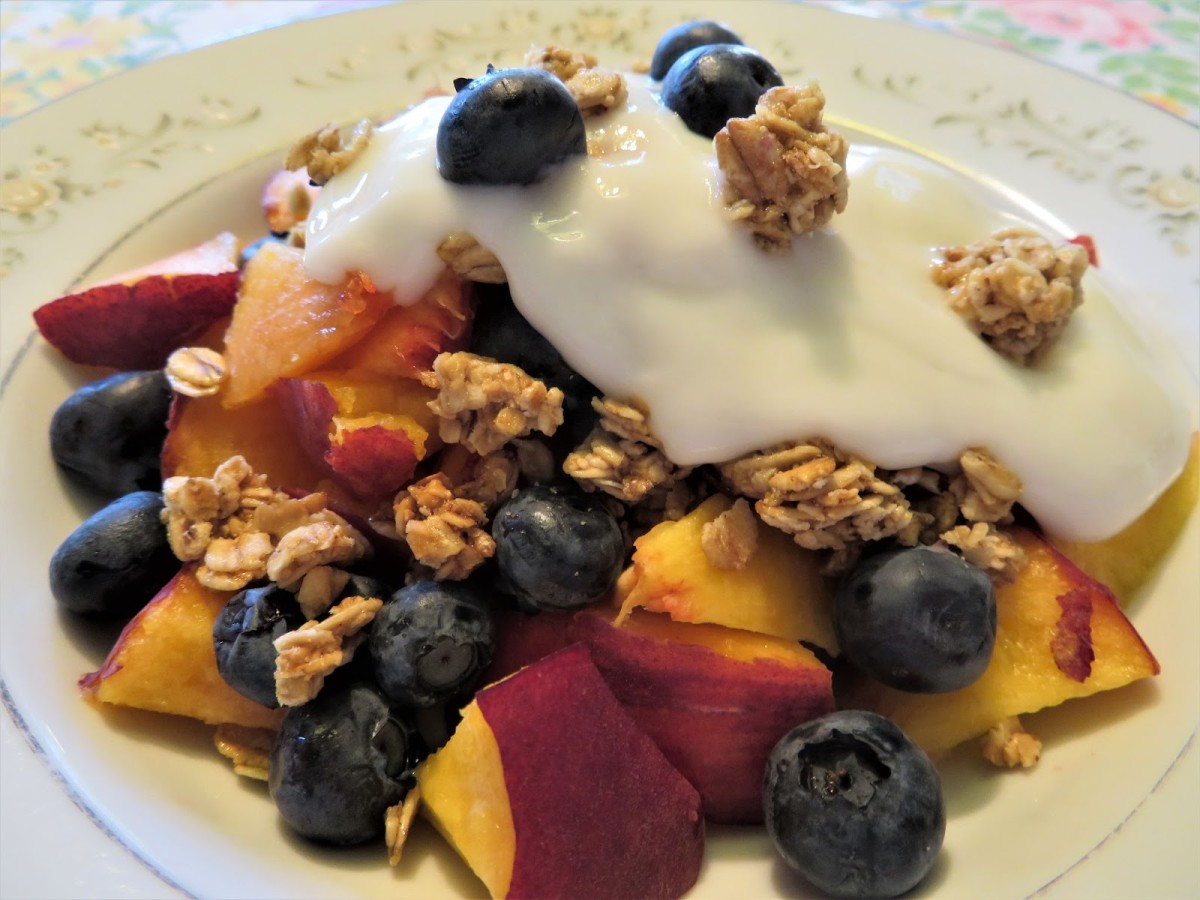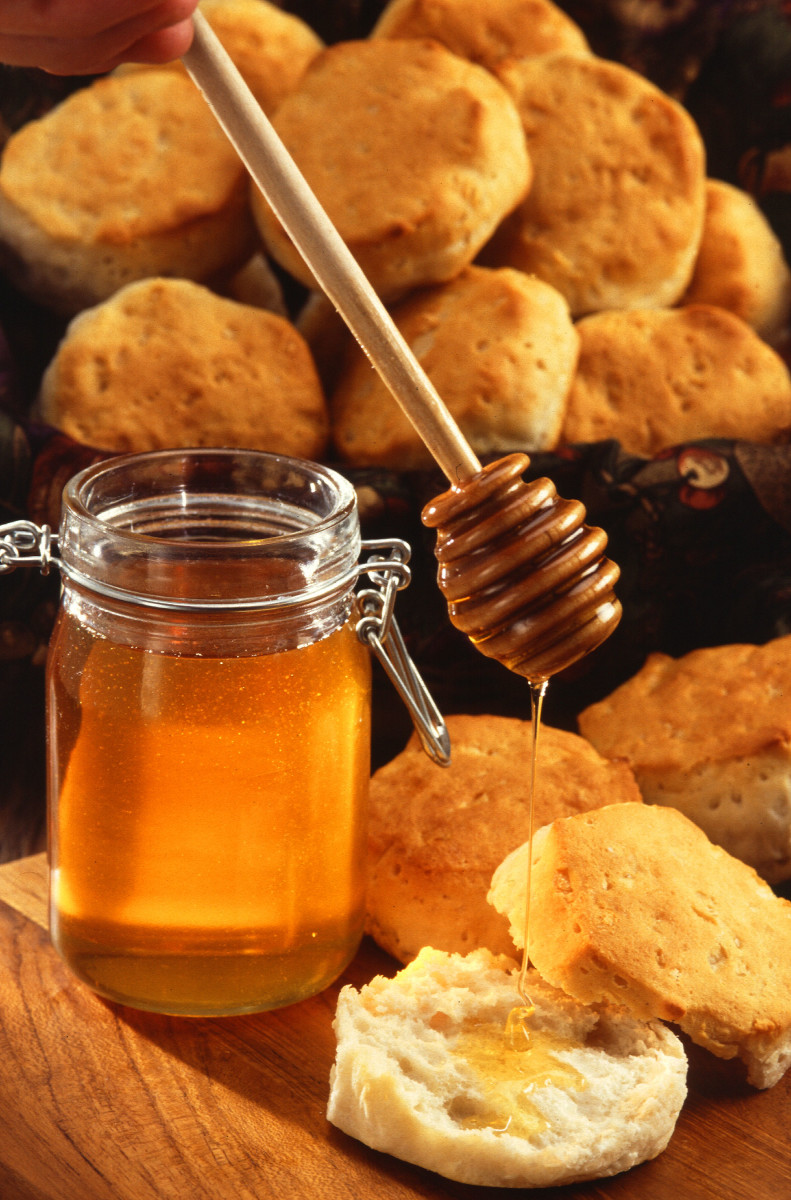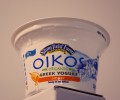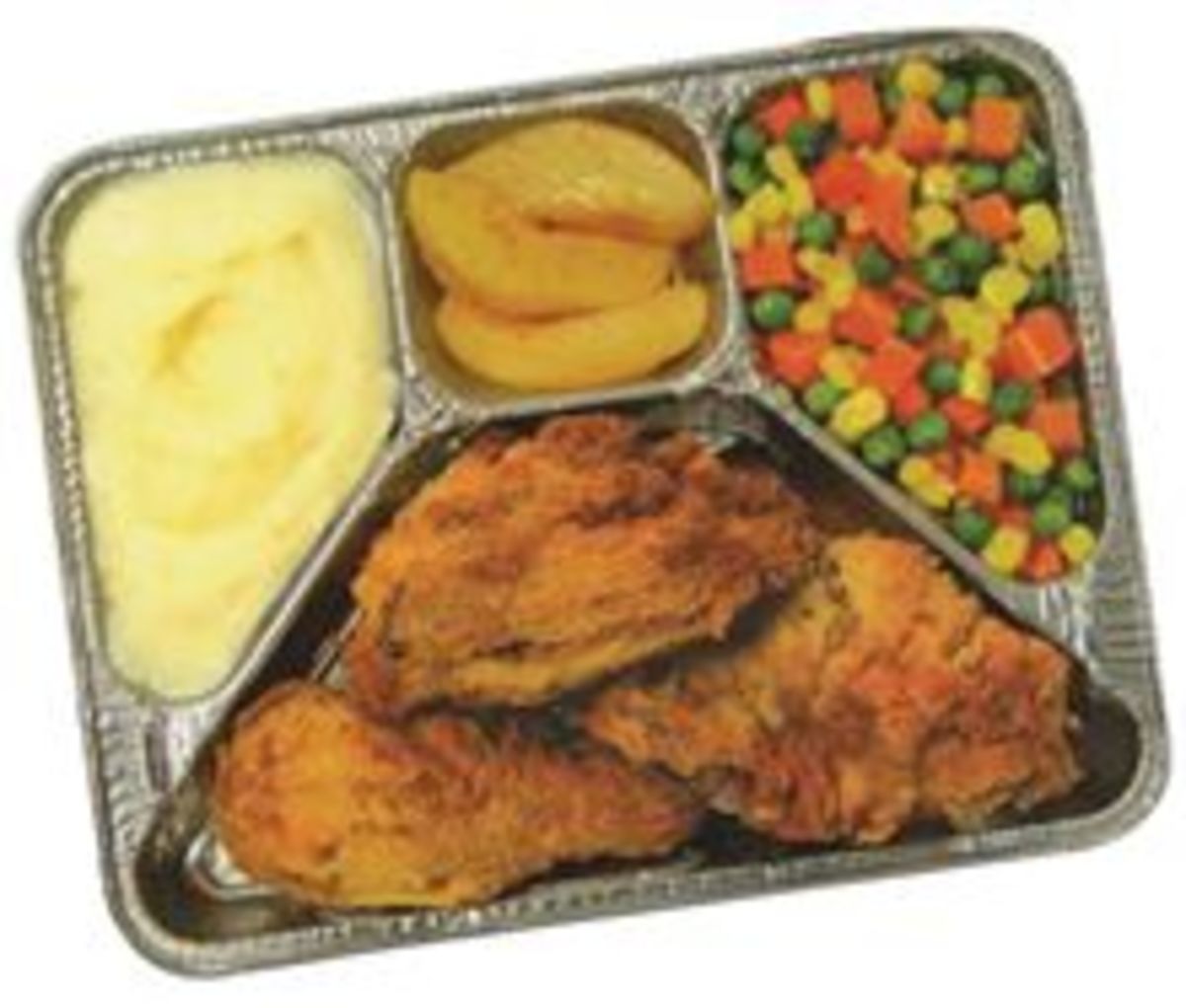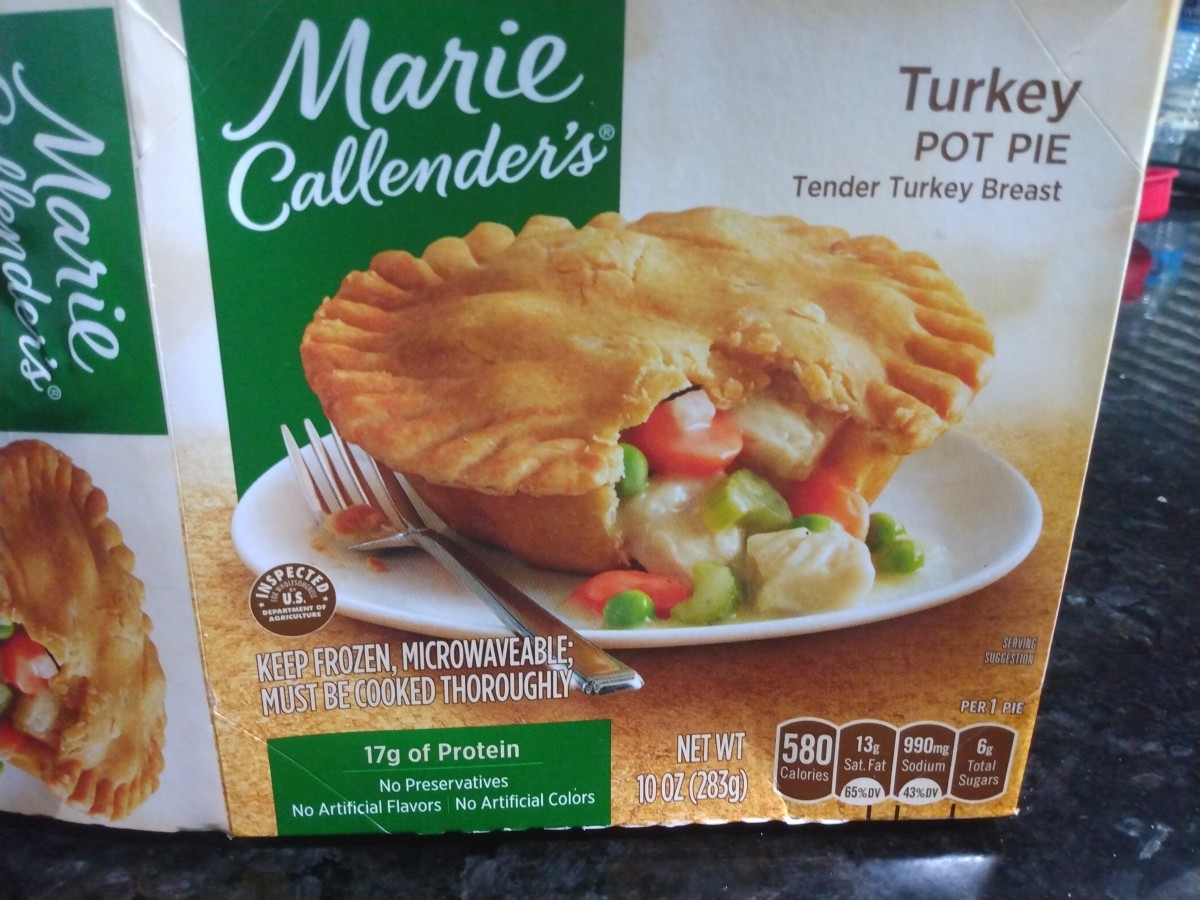How To Make Frozen Yogurt Easily and Inexpensively
Frozen Yogurt is Popular for a Reason
Frozen yogurt rose in popularity in the U.S. starting in the 1980s. Today, frozen yogurt is a $195-million-dollar industry in the US alone. Frozen yogurt is tasty, versatile, and offers some interesting health benefits. By making your own frozen yogurt at home, you can save money and avoid unhealthy additives. Most of all, it's easy to do, even for people who are not proficient in the kitchen.
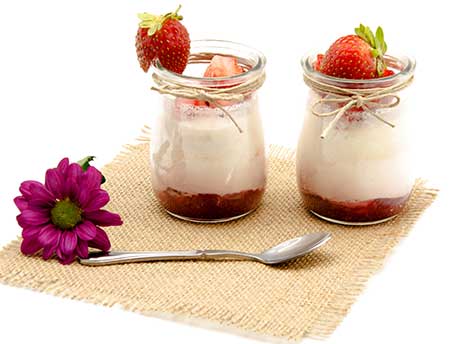
The Basics of Frozen Yogurt
Frozen yogurt is a frozen treat that is quite popular, especially in in the United States and Europe. The name is sometimes shortened to "froyo" or "froghurt". If you go to a self-serve retail store, like TCBY or Pinkberry, you could pay somewhere around $0.40 - $0.50 per ounce, or about $6-8 for a pint. Frozen yogurt is really easy to make at home, however, so you could save money and have more control over the ingredients if you whip up a pint of frozen yogurt yourself.
In addition to saving money, making yogurt at home can help you avoid ingesting nasty additives. Laura Schocker published a report in the Huffington Post detailing her research on the ingredients found in frozen yogurt offered for sale at six national frozen-yogurt retail chains. She found that additives such as guar gum, maltodextrin, sodium citrate, cellulose gum, disodium phosphate and propylene glycol monoesters were found in their frozen yogurts. She also found that some of the chains had added carrageenan as a thickener to their frozen yogurt, which has been blamed for causing negative health effects.
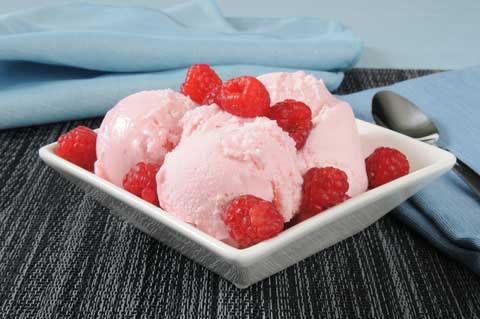
What are the Benefits of Frozen Yogurt Over Ice Cream?
Many people opt for frozen yogurt instead of ice cream because they are looking for a healthier alternative. Ice cream is made with cream, which has more fat and calories content than milk. Frozen yogurt, on the other hand, is made from milk, so it offers less calories and less fat per serving than ice cream.
In addition to less fat and calories, yogurt also contains nutrients that are good for the body. The content of the various nutrients vary depending on the brand of yogurt you use, but as a general rule, yogurt contains minerals such as magnesium, potassium, calcium, selenium, phosphorus, and zinc. Selenium and zinc are important to the immune system, and calcium is vital for strong bones and teeth, among other things. Yogurt contains protein, and it also contains vitamins, including Vitamin A, Vitamin D, and Vitamins B-1, B-2, B-6, and B-12.
Yogurt contains healthy probiotic bacteria that help promote a healthy digestive system. Some of the common bacteria cultures that yogurts contain include Streptococcus thermophilus and Lactobacillus bulgaris. Some research indicates that the bacteria do not survive the freezing process, however, so though they benefit you in yogurt, they most likely do not provide benefits to you when you eat it in the frozen form.
Studies have touted the benefits of yogurt by demonstrating that yogurt, along with other some other dairy products, can help lower a person's risk of getting high blood pressure. Yogurt has been shown to lower the risk of getting vaginal infections, and it can help people who are on a diet feel fuller.
Time Required
Ingredients for the Super Easy Way
- 1 quart (4 cups) yogurt, full fat is best. You can also use low fat or nonfat yogurt.
- 1 cup sugar, Optionally use sugar subsitute
How to Make Frozen Yogurt
To make frozen yogurt at home, you can choose the super-easy way or the more-involved way. You can do it with no special equipment, or you can use a machine.
The Super-Easy Way
This method involves grabbing a container of full-fat yogurt and adding sugar. Whip it up, freeze it, and you have some delicious, homemade frozen yogurt!
1. You can experiment with the amount of sugar you add, but to start with, add 1 cup of sugar to 1 quart (or 4 cups) of yogurt. Sugar helps create the texture of the frozen yogurt - the more sugar you add, the creamier it will be when frozen.
Of course, you can use nonfat or low-fat yogurt. Just understand that these versions will create a more "tart" or "acidic" taste. Milk fat gives the frozen yogurt a rich flavor. A full-fat yogurt isn't loaded with milk fat; you might have about 6% milk fat in a full fat version. A nonfat or low-fat yogurt might contain anywhere from 0.5% - 5% milkfat.
If you prefer not to use sugar, you can substitute the sugar with a sugar substitute like Equal or Splenda or whichever brand you prefer. If you're using Equal or Splenda packets, you'll need 24 packets to equal 1 cup of sugar. If you use the granulated forms, like Equal Spoonful or Splenda Granulated, use 1 cup.
2. For soft frozen yogurt, freeze it for about 30 minutes. For harder frozen yogurt, freeze it for 60 minutes or more. If it gets too hard, you can just let it set on the counter for 10-15 minutes to soften up a bit.
The More-Involved Way
This method involves making the yogurt yourself instead of just grabbing a container from the store. If you eat a lot of yogurt, it might make sense to make it yourself rather than spending $2-5 for a single container of it at the store. If you make it yourself, you also get to choose all the ingredients that go into it, so you avoid any additives you don't not want.
You can use a yogurt-maker, or you can make it without one by just using the utensils you already have. You also have the option of making it by using some store-bought yogurt as a starter, or you can get the bacteria cultures and inject them into your yogurt to truly create it from scratch.
Make Your Own Yogurt Using Store-bought Yogurt as a Starter
You will need:
1 Quart (4 cups) of milk. I prefer whole milk, but you can opt for a lower-fat version if you choose. Remember, more fat = more creamy.
2 Tbsp plain yogurt for the starter
- Heat the milk on the stove until it reaches 185 degrees. You can use a thermometer to measure the temperature, or if you don't have one, that's the temperature when milk starts to froth . Be careful you don't scorch the milk. You can prevent scorching by keeping the heat on a low or medium setting, and by stirring it often.
- Once the milk has heated up to where it starts to froth, remove it from the heat and let it cool to about 110-115 degrees Fahrenheit. If you don't have a thermometer, this is when it's just warm to the touch, like a cup of coffee you can drink without burning your mouth.
- Scoop out some of the warm milk and put it in a bowl (1/2 - 1 cup). Add the yogurt to this milk and mix it up to remove any lumps.
- Pour the milk/yogurt mixture into the pan with the milk. Stir.
- You now need to incubate the mixture at a temperature around 110 degrees Fahrenheit for about 4 hours. If you have a yogurt maker, just pour it in, turn it on, and let it sit. If you don't have a yogurt maker, you can cover the pan with a lid and put it in an oven set to 110 degrees. If your oven is like mine where the lowest setting is 250 degrees, you can turn the oven on low, let it heat up a little, then turn the oven off. Put your mixture (with the lid on it!) in the warm oven to sit.
- After four hours, check the flavor. If it's good - you're done. If you want, you can let it incubate longer. The longer it incubates, the more tart it will become and the thicker it will get.
Now you have homemade yogurt that you can use to make frozen yogurt. Add 1 cup of sugar, whip it up, and freeze it.
If you have an ice-cream maker, you can use it to make your frozen yogurt. There are quite a lot of different versions, so just follow the manufacturer's instructions.
Make Your Own Yogurt Using a Culture Starter Instead of Yogurt
You can purchase yogurt starters that contain the bacteria you need to make yogurt instead of adding yogurt you buy at your local grocery store. There are several different cultures, and each one offers different flavors, different consistencies, and different types of bacteria. Cultures for Health sells 11 different kinds of cultures.
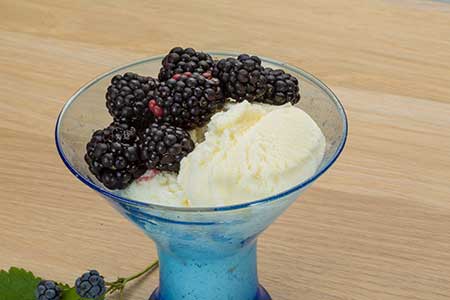
Greek Yogurt
Greek yogurt is quite popular. Greek yogurt is yogurt that has been strained to remove a portion of the liquid, leaving behind a nutrient-dense, thicker yogurt. To make your own Greek yogurt, line a strainer with cheesecloth. It's a good idea to fold it over a few times to make a good lining. Pour the yogurt on top of the cheesecloth. Set the strainer with the yogurt inside a bowl. Put the whole thing in the refrigerator for a few hours to let the liquid drain off into the bowl. When you have the thickness you want, remove it . Then you're ready to use it to make frozen Greek yogurt by adding sugar, stirring it, and then freezing it.
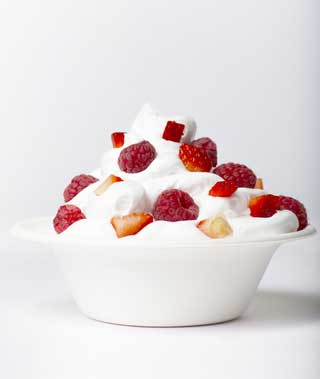
Spice Up Your Frozen Yogurt
Frozen yogurt is great, but it's even better when you add fruit or other flavorings.
The only limit to adding flavor is your imagination. If there's something you like, try adding it to your yogurt and mixing it up before you freeze it.
Here are some ideas for inspiration:
- M & M's
- Skittles
- Crushed pineapple
- Blueberries
- Strawberries
- Raspberries
- Chocolate syrup
- Diced peaches
- Blackberries
- Mango chunks
- Vanilla flavoring
- Peppermint flavoring
- Coconut flakes or coconut flavoring
- pomegranate seeds
Nutritional Information Using Yogurt with Sugar
| Nutrition Facts | |
|---|---|
| Serving size: 2 cups | |
| Calories | 659 |
| Calories from Fat | 144 |
| % Daily Value * | |
| Fat 16 g | 25% |
| Saturated fat 0 g | |
| Unsaturated fat 0 g | |
| Carbohydrates 23 g | 8% |
| Sugar 119 g | |
| Fiber 0 g | |
| Protein 17 g | 34% |
| Cholesterol 10 mg | 3% |
| Sodium 226 mg | 9% |
| * The Percent Daily Values are based on a 2,000 calorie diet, so your values may change depending on your calorie needs. The values here may not be 100% accurate because the recipes have not been professionally evaluated nor have they been evaluated by the U.S. FDA. | |

